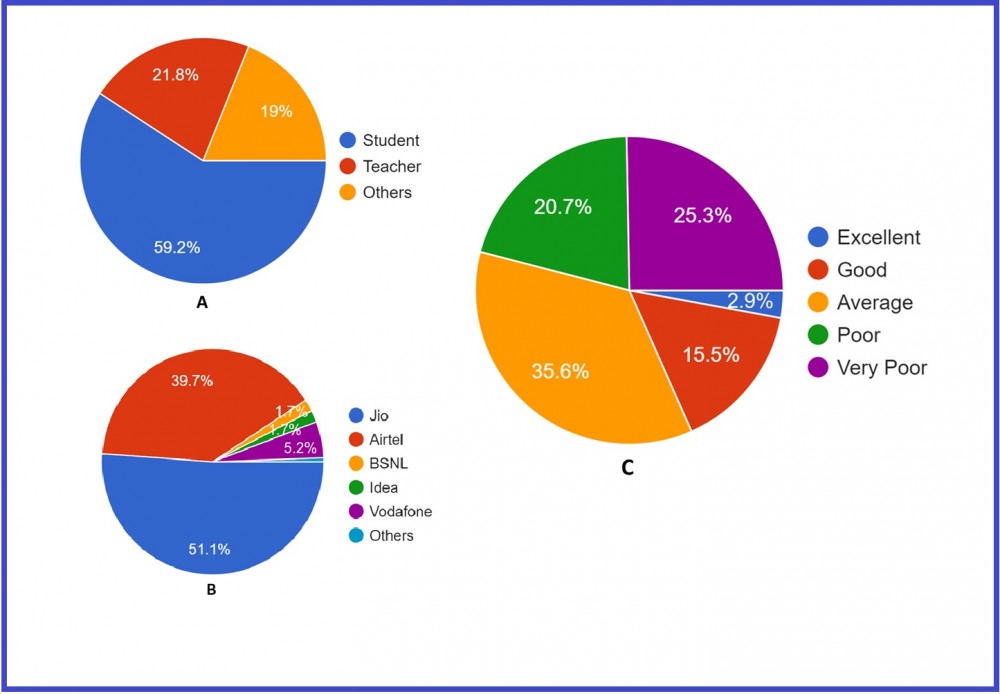Pie-charts depicting the nature of the participants (A), the service provider (B), and their quality (C).

Dr Parimal C Bhomick, PhD
Department of Chemistry, Immanuel College
With everything going online and digital in this pandemic, just having a gadget is not sufficient; one should have good internet connectivity as well for smooth online classes, streaming, or transaction. But this is not the case in the state, though we can see cellular mobile towers in every part of the state, the service provided by the concerned companies are not up to the mark.
To know how good service provider provides us with their network, a simple random survey was done through google forms. The form was sent and shared through WhatsApp platform and SMS. A total of 174 people submitted the form from almost all parts of the state and many were unable to submit citing lack of internet in their place as the reason.The chart below shows the nature of the participants (A), the service provider(B), and their quality (C).

Of the total participants, more than half of the participants were students as expected and one-fifth of the participants were teachers and the rest were others (mostly parents). It was found that the most used cellular service was Jio and Airtel. The main idea behind the survey was to understand the quality of mobile internet service in the state. It is very sad to see that only 2.9% of the participants feel that their service is excellent, 15.5% says good, 35.6% says average, 20.7% says poor and 25.3% says their internet is very poor.Thus, this survey shows how bad the condition of the mobile internet service is and how it can hamper all sectors specifically the education sector.
Here is a story from one of my students o said that “This is my network(by showing a screenshot of his network) hardly sometimes 4g. I don’t know what to do it’s not helping at all” when asked to download a note from google classroom to read for a class the next day. The student even said that he misses a test just because of the network. When asked about which network is good in his place, he replied “I am using Jio and Airtel but I hardly get network for Airtel but, Jio though it’s really really bad.” He is from Kuthur Village under Tuensang District, Nagaland. This is just an example of one of my students. There are many of my students who complain about network issues when we try to conduct online classes.
No doubt there is no equity in online classes, but at least service providers should be able to provide better service in all parts of the state, which might facilitate working in the digital platform. Just like you never forget to send us a message whenever our pack is about to expire—voice messages and text after text, you should also not forget to provide the service you are paid for and suppose to provide. Tag lines and missions of cellular mobile service provider show tons of promise but doesn’t go in par with the network services it provides in most of the places. The issue of the network has always been there, but in this pandemic, it has taken a toll on the life of both teachers and students(even parents) who are unable to conduct online classes —affecting the teaching-learning pathways.
There are instances where the service provider has provided instant service. For example, when Umpire Anil Chaudhary climbs up trees for mobile network in his ancestral village, has now got a mobile tower at his village, solving the connectivity problems of thousands of villagers. Then why would it be a problem for people in our state?Internet a become a need of the society in this digital century and to provide smooth-excellent internet connectivity is the sole responsibility of the service provider. This will add to the Hon’ble Prime Minister Narendra Modi’s vision of a digital India—to empower every citizen with access to digital services, knowledge, and information.




